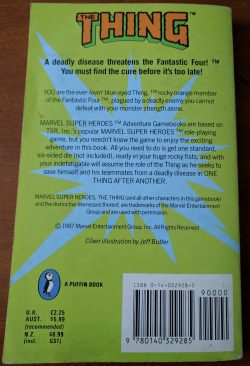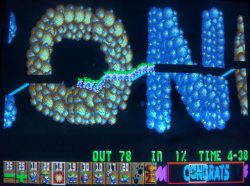Back in August last year, I was excited to find out about the forthcoming Kickstarter for Through The Moongate. This two part book would cover the history of Richard Garriott and Origin from school days all the way up to Portalarium. The Kickstarter met its goal and part 1 was duly published in June/July this year, on time no less (a real rarity for a Kickstarter).
There have been a handful of Origin/Garriott histories produced before, the obvious example being the Official Book Of Ultima. That particular book was less than comprehensive, stopped at Ultima 6 and only looked at Richard Garriott’s side of the story. Through the Moongate was something new and far more detailed. While centered around Ultima, it would cover Origin’s other games and tell the stories of all the people behind them rather than just concenrating entirely on Lord British at the top.

The book arrived at my door some months back and it’s about time I had a quick look at it on here. I’ve not seen the paperback in person but the hardback book I received is extremely high quality and I have no complaints there whatsoever. I didn’t want to wait so by the time it arrived I’d already read the early release chapters as they trickled out, usually on my phone while on a train journey somewhere. Not the ideal way to read any book and it’s only yesterday that I actually sat down to read the final product properly.
So far, I’m a third of the way through on the second read and if anything enjoying it even more than the first time. The early stages offer a detailed biography of Garriott’s formative years, while telling the stories of the relevant people and influences around him. It’s extensively researched and the narrative often weaves around to introduce important figures such as Steve Jackson or even discuss the origins of home computing. The author (Andrea Contato) provides a framework for the story never assuming too much knowledge from the reader. As an Origin nut, there are times I’d prefer a bit more knowledge being assumed but I realise I may not be the typical audience.
These early stages of the book include anecdotes from Richard’s family and friends which flesh out the story far beyond the official book of Ultima. The early Ultimas were very much reflections of their author and his environment, something which is shown in far greater detail here than anywhere previously. If you are at all interested in the history of Origin (and if you aren’t this is the wrong site), it’s essential reading. It’s the later chapters where Andrea’s research truly shines for me however, as Origin begins to expand. There are a wealth of Origin alumni whose stories need to be told and it’s these that I most want to hear.

Which is the cue for me to bring up part 2, the Kickstarter for which will begin a few minutes from time of writing. This will cover the story from about 1990, starting with Wing Commander and Ultima 7 through to Portalarium. It was these years when Origin became the behemoth I would know and love in the 90’s. This is what I was most looking forward to reading about from the moment I heard about Through the Moongate. Andrea has spent several years researching and writing these books. The project deserves your support – please head on over to the Kickstarter and splash some cash.
To give full disclosure, I do have some minor involvement in these Kickstarters so I’m not what you would call entirely impartial. I got involved primarily because I want to read the books myself and I’ll still be putting my own hard-earned into the KS like everyone else. I can’t wait to get my hands on the second volume and hope that it gets the backing it deserves.








